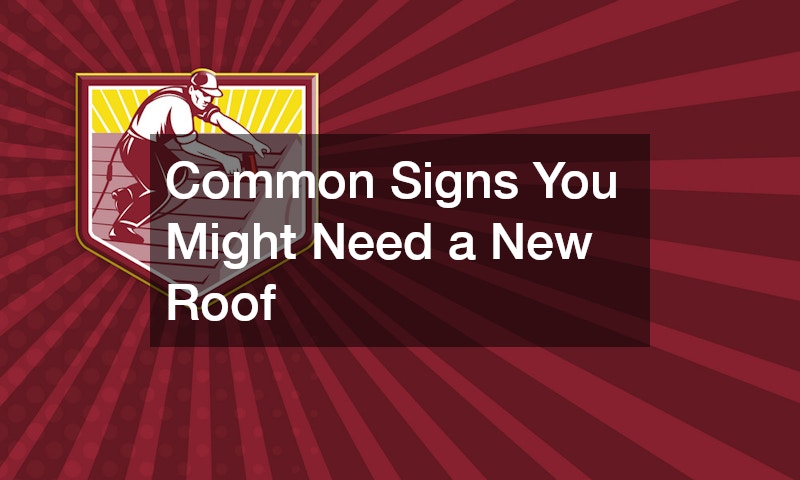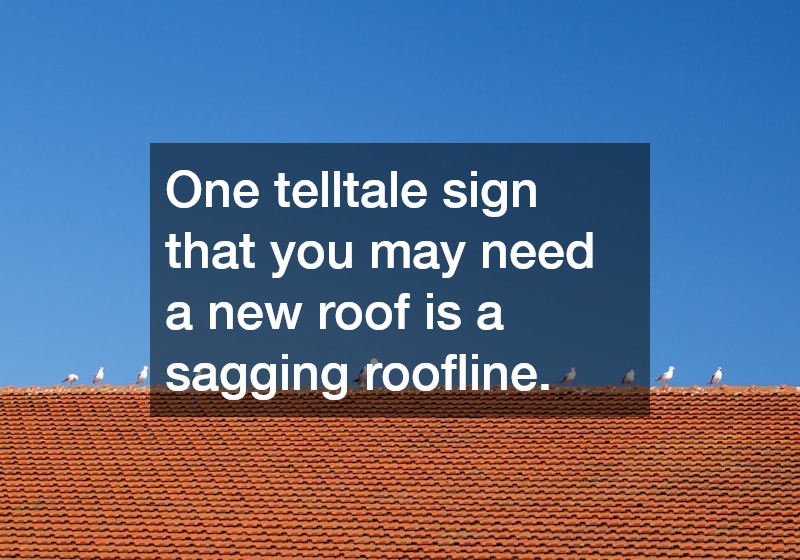
Keeping your home in good shape means paying attention to critical maintenance tasks, with your roofing system being one of the most vital components. Your roof acts as the frontline defense against harsh weather conditions and provides essential insulation. However, even the most meticulously maintained roofs will eventually show signs of wear and tear. Homeowners often overlook the subtle signals that indicate their roofs might need replacing, but ignoring these signs can lead to bigger issues. By recognizing these common signs early, you can undertake necessary home roof repair before minor problems turn into significant expenses.
Sagging Rooflines
One telltale sign that you may need a new roof is a sagging roofline. A roof in good condition should appear straight and solid, and any deviations from this can suggest structural problems.
Sagging can occur due to excess weight from snow or water, faulty materials, or inadequate roof support. If you notice any dips, waves, or droops, it’s crucial to have a professional assess the situation immediately. An expert can determine if simple home roof repair can address the issue or if a complete roof replacement is necessary to preserve the integrity of your home.
Often homeowners dismiss minor sagging, assuming it’s an insignificant problem, but the reality is it often indicates a more severe underlying problem. Over time, continuous weight and stress can worsen the sag, leading to damage that might compromise your entire home’s structure. Failing to correct sagging when first noticed can lead to leaks, infestations, and even structural collapse in extreme cases. If neglected, the cost of fixing problems related to a sagging roofline can skyrocket, far exceeding the original cost of re-roofing. Experts recommend routine inspections of your home’s roof to catch any minor sags that can be corrected before escalating into major repairs.
Roofs on older homes are more susceptible to sagging due to decades of exposure to the elements. With modern building codes and advanced materials, new roofs offer additional support and durability over older systems. Homeowners should ensure they trust a reputable contractor to evaluate their roof’s performance. Regular maintenance can include checking for additional factors contributing to sagging such as poor drainage or inadequate ventilation. Identifying weak areas early allows homeowners to take proactive steps in safeguarding their home from larger, more expensive structural issues.
Shingle Damage
Shingles play a crucial role in protecting the underlying layers of your roof from inclement weather. When shingles become damaged or begin to deteriorate, they provide less protection and can lead to leaks and interior property damage. Common signs of shingle damage include curling edges, cracks, and bald spots where granules are missing. Ignoring these visible signs will likely lead to water infiltration, causing rot and mold within your home’s structure. Engaging with a professional for home roof repair at the first sign of shingle damage will help prevent more serious problems from developing.
Shingles weather and age faster in areas with extreme weather conditions such as heavy storms or intense sunlight. They are designed to protect against elements but will not last indefinitely. In fact, depending on the material, shingles will need replacing every 20-30 years. Observing changes in your shingles, such as discoloration or increased granule loss, typically signals the need for roof evaluation. Routine inspection of shingles, especially after severe weather, ensures you can quickly identify damage that necessitates repair or replacement, optimizing the lifespan of your roof.
The condition of your shingles also tells a story about the health of your entire roofing system. If you detect frequent issues or persistent problems, it may indicate that your shingle quality was poor to begin with. Opting for a comprehensive roof replacement might provide a more cost-effective solution over time rather than patchwork repairs. Quality shingles can drastically enhance your property’s insulation, reducing heating and cooling costs significantly. Thus, keeping shingles in prime condition offers both immediate protection and long-term financial benefits.
Leaks and Water Damage
Water is a significant threat to your home, and one of the most common indications of a failing roof is the presence of leaks or noticeable water damage. Leaks can be deceptive, often starting small but causing considerable damage if left unchecked. Visible signs of water damage inside your home include wet spots on ceilings, discolored walls, or a musty odor in certain areas. These indicators not only impact your home’s aesthetic value but also pose health risks due to the potential development of mold. To mitigate such risks, regularly inspect your attic and upper floors for telltale signs of water penetration into your home.
Identifying small leaks is one of the easiest ways to prevent extensive damage to both your roof and home interior. Many homeowners mistakenly believe that a small leak is easily fixed or will disappear on its own. However, without prompt and efficient home roof repair, even minor leaks can escalate, resulting in significant structural damage over time. Leaks can affect insulation, wood framing, and eventually lead to collapsing ceilings if water pools extensively. Addressing such issues immediately can extend the life of your roof and substantially increase your home’s resale value.
Beyond the internal signs, external water damage can also indicate the need for a new roof. You should inspect your roof after heavy rains for damages like cracked or warped surfaces, missing shingles, and obvious puddling of water. Even if repairs are completed to temporarily patch leaks, persistent problems may only be resolved with a full replacement. A new, sturdy roof eliminates the risk of continuous leaks and provides a fresh, robust coverage shield for your home, ultimately protecting your family and assets for years to come.
